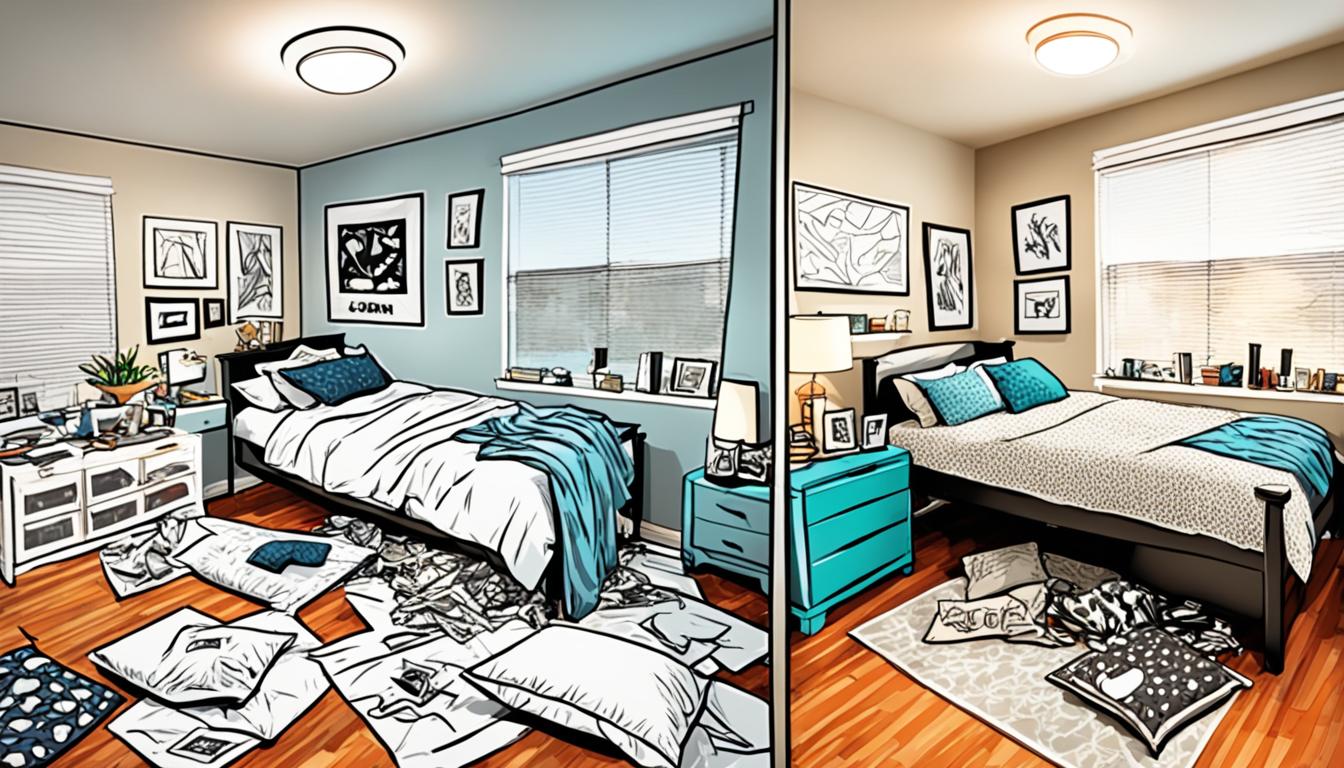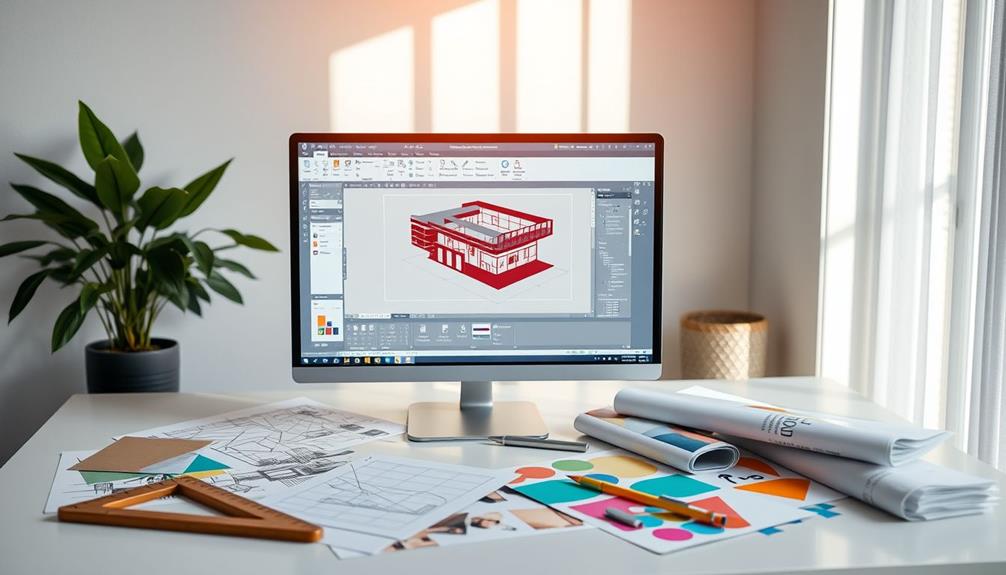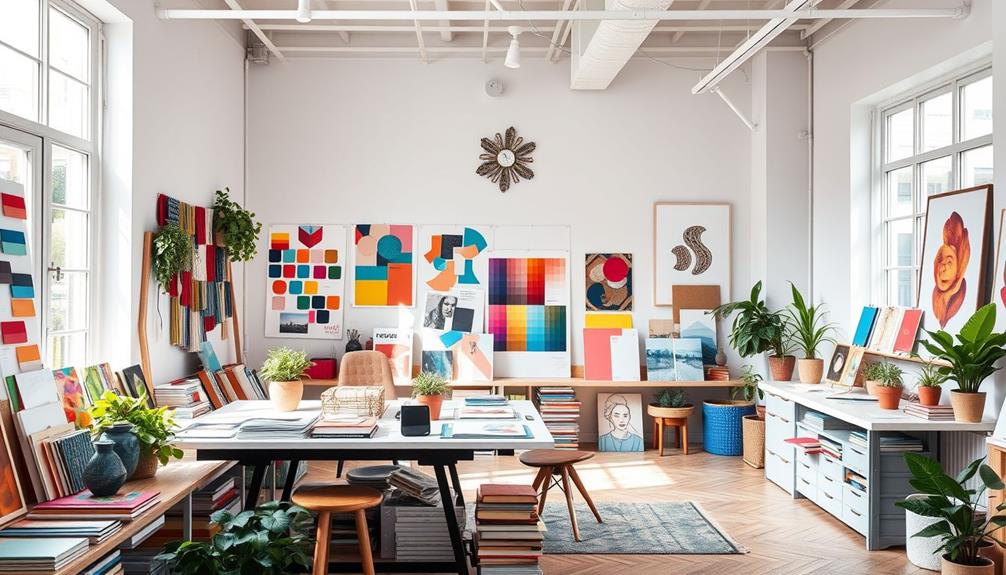Designing your bedroom can seem like a daunting task, but with the right approach, it can be an enjoyable journey toward creating a cozy sanctuary that truly reflects your personal style. Understanding how to interior design bedroom involves breaking the process into manageable steps. This article aims to guide you through each phase of your bedroom design, providing valuable bedroom decor tips along the way. One of the first steps in the bedroom design process is to establish a concept or theme for the room. This could be as simple as choosing a color palette or as specific as selecting a particular style, such as modern or rustic. Once you have a vision in mind, it’s important to consider the practical aspects of the room, such as furniture layout and storage solutions. If you’re feeling overwhelmed, you may want to consider seeking professional help through the interior design firm registration process, where experts can guide you through the entire design process and help bring your vision to life.
Beginning with a clear vision is paramount for a successful outcome. To help keep your design project under control, it’s advisable to establish a budget, factoring in an extra 10% to 20% for unexpected costs. Seeking at least three bids for contractor work ensures you’re assessing both quality and cost variations. Additionally, creating a mood board before embarking on the design process can catalyze inspiration and prevent costly mistakes.
From selecting perfect color schemes to organizing your spatial layout, each decision you make contributes to a harmonious bedroom environment. With various bedroom design ideas at your disposal, maintaining a flexible approach throughout your journey will ensure your end result meets your unique needs without overwhelming you.
Key Takeaways
- Keep your design project manageable by establishing a budget.
- Create a mood board to identify your design preferences.
- Consider selecting a color scheme of 4-6 colors for harmony.
- Maximize functionality by planning a scaled layout.
- Invest in quality bedding to enhance sleep quality.
- Ensure proper placement of furniture for optimal flow and access.
Crafting Your Vision for a Cozy Bedroom Design
Creating the ideal cozy bedroom design begins with understanding your unique style and mood preferences. Your bedroom serves not only as a place for rest but also as a personal sanctuary that reflects who you are. This section will guide you through defining your aesthetic and exploring a variety of bedroom styles that can inspire your vision.
Defining Your Style and Mood Preferences
Take a moment to consider how you want your bedroom to make you feel. Soft, muted tones can create a tranquil atmosphere, while brighter hues may evoke energy. Identify whether you lean more towards minimalist elegance or prefer a vibrant and eclectic feel. Reflect on your personality and how it can shape your cozy bedroom design.
Exploring Various Bedroom Styles
Understanding different bedroom styles is essential in crafting your vision. From modern and sleek to rustic and inviting, each style offers unique elements. Popular options include:
- Modern: Clean lines with a focus on functionality.
- Rustic: Natural materials that create warmth and charm.
- Scandinavian: A minimalist approach emphasizing light and airy spaces.
- Bohemian: An expressive mix of colors and textures.
Explore these varied bedroom styles to determine what resonates with you. This exploration is crucial for effective personalization in interior design, as it helps you establish a coherent vision for your space.
Understanding the Importance of Personalization
Personalization in interior design sets your bedroom apart, allowing it to reflect your identity and lifestyle. Incorporating sentimental items such as family photos can infuse your space with emotion. Whether it’s a specific color scheme, like the serene combination of greenish aqua, white, and gray, or distinctive decor pieces, every element matters in creating a space that feels uniquely yours.
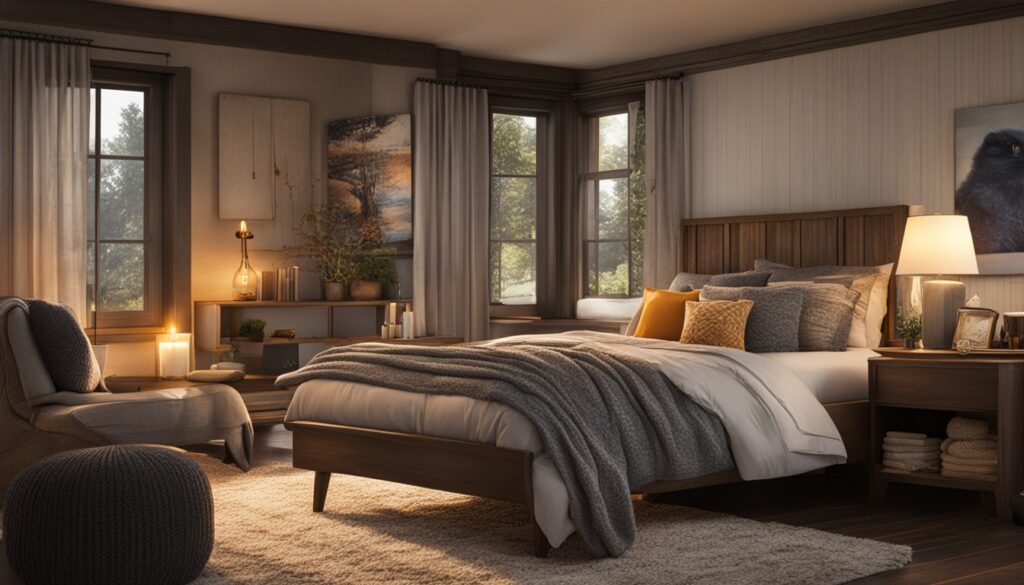
When choosing furniture and decor, prioritize function alongside aesthetics. For instance, quality mattresses and layered lighting can enhance comfort and usability. Explore multifunctional furniture that meets storage needs and keeps your bedroom organized. This blend of style and utility contributes to a calm and inviting environment.
| Bedroom Style | Key Characteristics | Color Scheme |
|---|---|---|
| Modern | Clean lines, minimal clutter | Neutrals and bold accents |
| Rustic | Natural materials, warmth | Earth tones, rich woods |
| Scandinavian | Light, functional, simple | Whites, soft pastels |
| Bohemian | Colorful, eclectic, artistic | Rich colors, mixed patterns |
Designing your cozy bedroom requires a thoughtful blend of personal style and functional decor. Engage in this creative process, and watch your unique vision for the space come to life.
How to Interior Design Bedroom: Understanding Your Space
Understanding your space is a vital aspect of interior design. When you start planning your bedroom, the first step is measuring room dimensions accurately. This allows you to envision how everything will fit together. Pay attention to key features like windows and doors, as their placement significantly influences your bedroom layout considerations.
Measuring Your Room Dimensions
Begin by taking precise measurements of your bedroom. Knowing the width, length, and height creates a solid foundation for your design plan. Consider the average bedroom size in the US at 14 feet by 16 feet, keeping in mind that your room might be uniquely sized. It helps to create a simple sketch, marking out where major furniture pieces will go. This will assist you as you move forward with selecting styles and layouts that maximize the space available.
Identifying Key Features: Windows and Doors
Windows and doors are not merely entry points; they are vital elements that shape your bedroom’s ambiance. Take note of their size, position, and how they interact with your design choices. Optimal placement of furniture around these features can enhance flow while ensuring natural light enters your room. This understanding plays a crucial role in crafting a harmonious environment that balances style and functionality.

Selecting the Perfect Bedroom Color Schemes
The atmosphere of your bedroom largely depends on the colors you choose. Selecting the perfect bedroom color schemes can enhance your overall comfort and well-being. You’ll find that certain hues resonate with your personality while influencing your mood. As you delve into the art of choosing colors, consider the psychological effects of color, which can evoke various emotional responses and create the environment you desire.
Choosing Colors that Reflect Your Personality
Your bedroom should be a reflection of who you are. Begin by creating a mood board filled with colors that speak to you. Consider soft pastel shades like lilac and lavender for a calm and relaxing feel. If you prefer something bolder, combining these soft hues with bright, inviting colors can create an energizing atmosphere. Think about how you feel in spaces painted in shades of blue or green, known for their calming effects, making them ideal choices for a bedroom.
The Psychological Effects of Color in Design
Colors carry deep psychological meanings that can greatly influence our emotions. Research indicates that blue is the best choice for bedroom walls, promoting tranquility and restful sleep. Shades of green and yellow are also effective for elevating mood. In contrast, vibrant hues like orange may feel overwhelming when used excessively, yet can be welcoming as accents. Monochrome schemes foster a functional sleeping environment, while soft and gentle colors connect with nature, enhancing a timeless appeal.
Popular Color Combinations for Bedrooms
Choosing color combinations can be exciting. Popular combinations include:
- Soft grays paired with pastel pinks for a modern twist.
- Calming blues with delicate whites to enhance light.
- Earthy greens with muted browns to bring the outdoors in.
- Dark colors used sparingly for cozy corner nooks.
These combinations not only enhance aesthetics but also create an inviting space. Remember that the orientation of your bedroom can influence which color schemes work best. Utilize the feeling of different colors alongside your preferences to establish a sanctuary that reflects your lifestyle.
| Color | Psychological Effects | Recommendations |
|---|---|---|
| Blue | Calming and restful | Best for main wall color |
| Green | Soothing and refreshing | Great for accents or additional walls |
| Grey | Neutral and calming | Versatile for any scheme |
| Pastels | Soft and serene | Use as dominant color |
| Orange | Inviting but can be overwhelming | Use as an accent color |
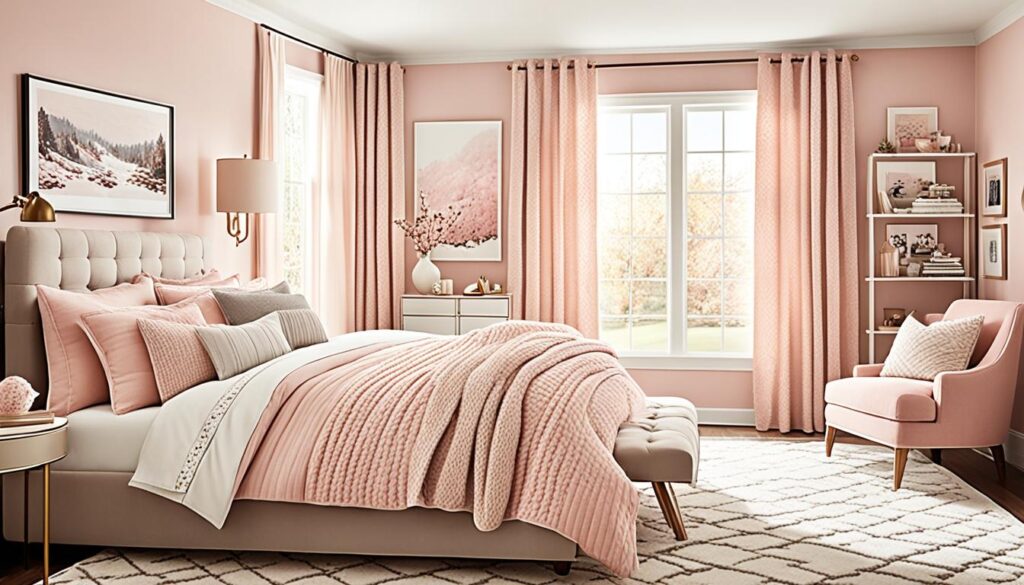
Arranging Your Bedroom Furniture for Optimal Flow
Arranging bedroom furniture effectively can significantly enhance the functionality and aesthetics of your space. It’s essential to create a layout design that maximizes comfort while ensuring ease of movement. By applying some foundational principles, you can achieve a cohesive and organized bedroom environment.
Maximizing Space in a Small Bedroom Design
In smaller bedrooms, effective bedroom furniture arrangement becomes crucial. Placing your bed against the longest wall often helps make the most of the available area. In cases where space is limited, positioning the bed on the shortest wall may be necessary. Feng Shui experts recommend avoiding bed placement under windows, although this arrangement can work in tighter quarters.
To create an illusion of more space, consider a minimalist approach. Lean into vertical storage solutions and keep pathways clear to promote movement. Visual interest can be added through colorful throws and pillows, while ensuring not to overcrowd the room with excessive furniture.
Creating Functional Layouts that Work for You
Functionality should remain at the forefront of any room’s design. Ensure that your furniture arrangement takes into account the main activities you engage in daily. A well-structured layout design may include placing a dresser opposite the bed to maintain visual balance. Establishing zones in larger bedrooms can accommodate different purposes, like having a nook for reading or a small workspace.
Consider the arrangement of chairs and benches that invite relaxation. Utilize neglected spaces effectively, like beneath windows, to create cozy areas. Lighting choices can significantly impact overall well-being; therefore, explore various options to enhance both aesthetics and functionality.
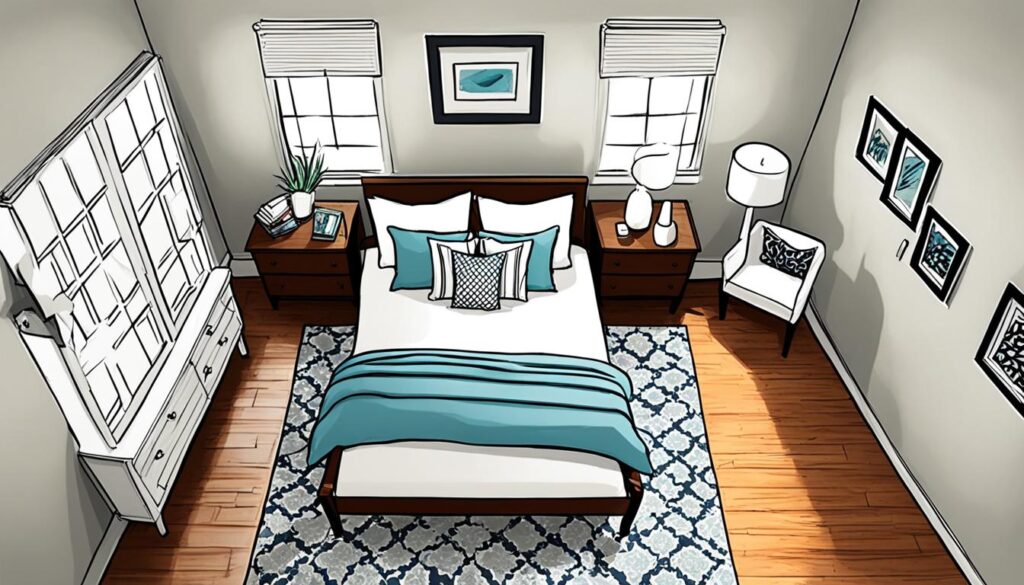
Conclusion
As you reflect on your journey of learning how to interior design bedroom, it’s crucial to embrace the creative process that goes into crafting your ideal sanctuary. From defining your personal style to selecting the perfect color schemes, each step plays a significant role in transforming your space into one that resonates with comfort and functionality. Employ key pieces like the GUS Modern Carmichael Bed and compliment your design with accents such as the Louis Poulsen Panthella Table Lamp Mini for a sophisticated touch.
In this summary of the design process, you’ve explored various bedroom styles, each offering unique elements—whether it’s the relaxed vibe of a Beach-style decor or the timeless elegance of French aesthetics. Items like the Canvas Home Shell Bisque Cereal Bowl – Set of 4 and the Ferm Living Plant Box – Large not only enhance visual appeal but also reflect your personality and taste. Furthermore, the Menu JWDA Table Lamp adds a stunning contrast that’s both functional and artistic.
Now that you’ve gathered insights on how to create a cohesive bedroom design, it’s time to take action. Remember, this space should serve as your peaceful retreat, and integrating your style with practical design elements will lead you to a beautifully tailored oasis. Embrace the next steps with confidence, and let your personalized bedroom be a reflection of who you are.
